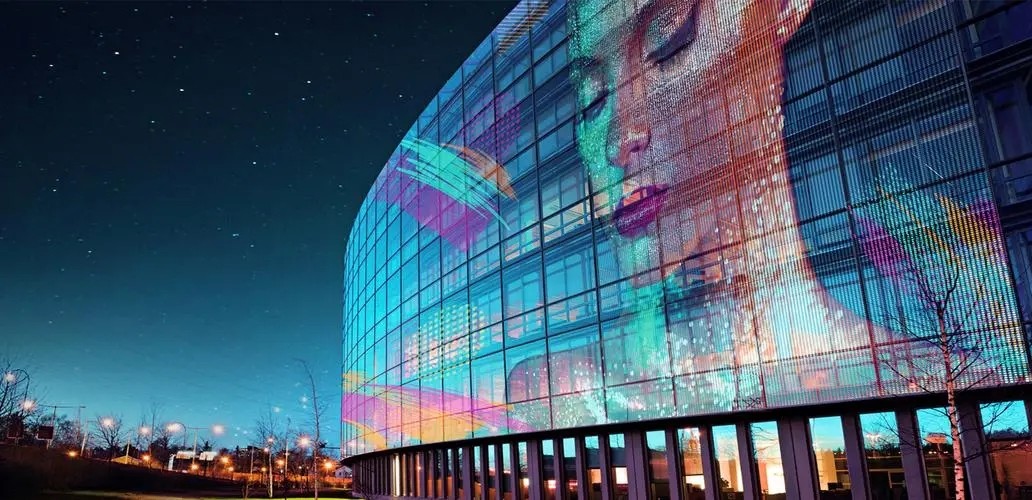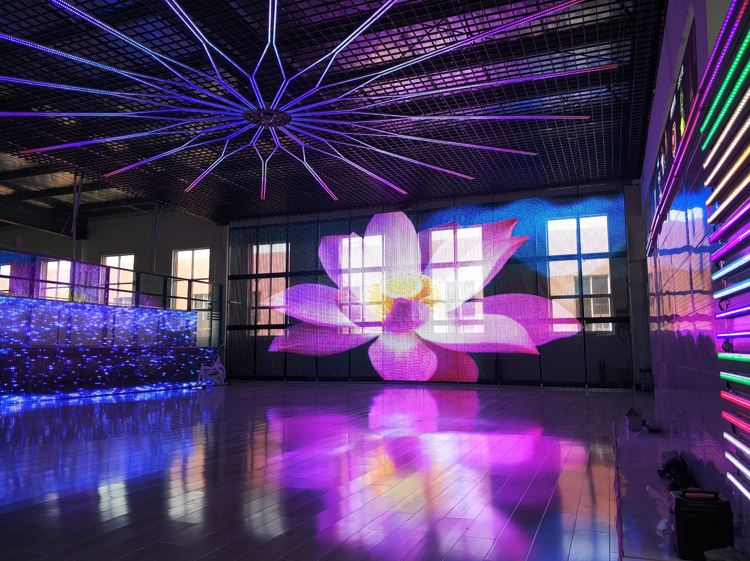In today's digital age, LED displays have become an indispensable display tool in various places. Among them, LED grille screens, as a new type of display screen, are gradually being favored by a large number of users. This article will compare LED grille screens and traditional LED displays to help you better understand the differences between these two products.

Weight and wind load
LED grille screens have significant advantages in weight and wind load. Compared to traditional LED display screens, the weight of LED grille screens has been reduced by 60% -80%, with a transparency rate of up to 40% -95%, effectively reducing wind loads and further reducing the strength and weight of the basic structure of LED display screens. This minimizes the damage to walls and foundations caused by LED grille screens during installation, while also facilitating handling and transportation.
Structure and Installation
The structure of LED grille screen is simple and easy to install, which brings great convenience to maintenance. Compared with traditional LED display screens, LED grille screens can be easily attached to walls with only a small number of components, without damaging the walls and foundations. In addition, the LED grille screen adopts a modular design, making maintenance more convenient and efficient.
Heat dissipation performance
The LED grille screen adopts a unique heat dissipation system, which eliminates the need for additional heat dissipation equipment during use. Each LED strip is made of aluminum alloy material, which is transparent around and can achieve good self cooling. This design not only improves the stability of LED grille screens but also greatly reduces maintenance costs. In contrast, traditional LED displays require additional cooling equipment to maintain normal operation.
Aesthetics and adaptability
LED grille screens have a certain degree of transparency, and after installation, they not only have powerful functions but also have a beautiful appearance, with little impact on the lighting of the building. The overall power consumption is also relatively low, and the integrated design of the control box and installation structure results in a smaller installation space. This makes LED grille screens more suitable for installation on glass curtain walls and walls with low load-bearing capacity. In addition, the structure of LED grille screens makes it easier to adapt to different installation locations, whether indoors or outdoors.
Energy consumption and conservation
The energy consumption of LED grille screens is relatively low, which helps to reduce energy consumption and carbon emissions. Due to its lightweight and simple structure design, the power consumption of LED grille screens is relatively low, thereby reducing operating costs and meeting the social needs of energy conservation and emission reduction. By contrast, traditional LED displays typically consume more energy and require more electricity to drive them.
Reliability and Durability
The LED grille screen is made of high-quality LED light strips and aluminum alloy materials, and its reliability is ensured through strict quality control. Due to its lightweight and simple structure design, LED grille screens also have stronger wind resistance and can maintain stable operation under various extreme weather conditions. In addition, LED grille screens also have a long service life, usually reaching over 50000 hours, making their investment return rate higher.
Intelligent control and interactivity
LED grille screens can be easily integrated with various intelligent control systems, achieving remote control, real-time monitoring, and interactive functions. For example, the LED grille screen can be remotely operated and controlled through mobile applications or network control platforms to achieve the function of playing dynamic videos, images, and information content. In addition, LED grille screens can also support interactive functions such as touch sensing and motion capture, providing viewers with a more immersive experience. By contrast, traditional LED displays typically do not have these functions and are relatively inflexible to use.
In summary, LED grille screens have significant advantages in weight, wind load, structure and installation, heat dissipation performance, aesthetics and adaptability, energy consumption and energy conservation, reliability and durability, as well as intelligent control and interactivity. These characteristics make LED grille screens an innovative and high-performance display type, suitable for various application scenarios and needs. LED grille screens can provide excellent solutions in fields such as commercial advertising, public information display, interior decoration, and outdoor art exhibitions, meeting customer needs and bringing authentic visual effects.





